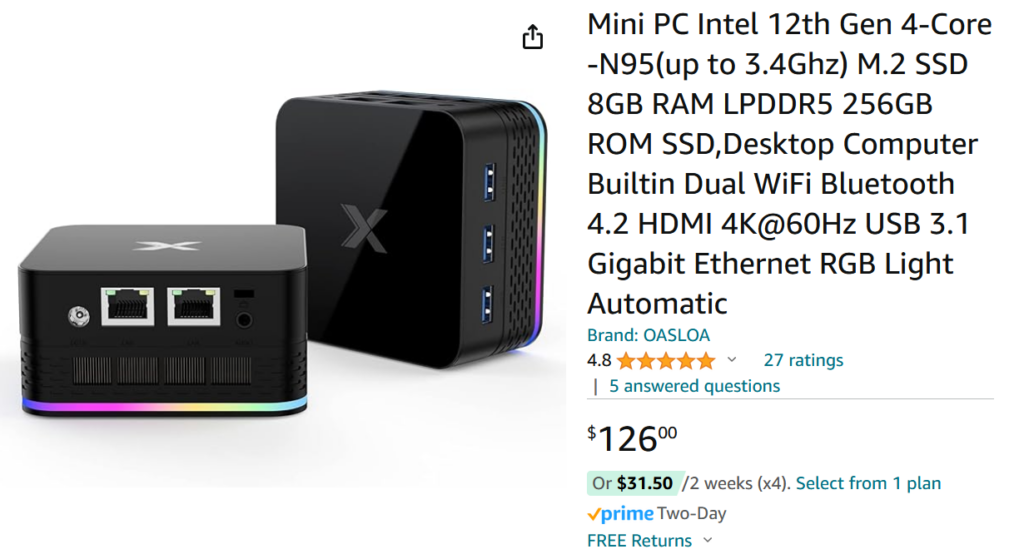Hardware matters, but software matters so much more.
Easy as Pi
For years software support, documentation, and the surrounding community of hobbyists made the Raspberry Pi outstandingly popular to the point of techno-culture phenomenon. The Raspberry Pi 5 was released earlier this year, but supply issues continue such that a casual purchase today won’t be delivered for several months. I own the Raspberry Pi 4 and even ordered the initial release back in 2013, a year after the device dropped. I remember ordering it from my parent’s home while thinking about what projects I might pursue. Eventually, my device was retired in 2017 when better single-board computers hit the market. Still, I haven’t ordered the Raspberry Pi 5 because it no longer meets my needs.
For starters, the price of the Raspberry Pi has crept up from its initial $35 target. With a generous measurement of inflation from the year of release to present year in the United States (using posted inflation calculators rather than from my date of purchase), that’s about $47 in today’s dollars. The base model Raspberry Pi 5 now goes for $60, which shortens the gap between the Raspberry Pi and new mini-PC alternatives entering the market starting as low as the $100 price point.
Another factor to consider is that I’ve changed. I have a far deeper understanding of operating systems and more broadly in computer software than I did ten years ago. I don’t need my hand held anymore for simple tasks. I don’t use Raspbian anymore on my devices because I want more customization, for example, but until now I stuck with it because at the Pi 4, the quad-core A72 SoC is unbeatable in single-board computers in the price range.
The biggest factor however behind my decision behind not purchasing the Pi 5 is platform support by third party binaries. I want to be a part of volunteer computing projects like BOINC where ARM binaries are at best an afterthought. Combined with the relatively low RAM, and there’s not many volunteers using ARM, and while sometimes I can build from source, it’s just not as stable and maintainable as using release software for x86-64.
Enter: Mini PC

I ordered the pictured mini PC last week. For that price, one could get two Raspberry Pi 5s with some patience, but I think that I’m getting an incredible value. If you want 8GB, you’d have to upgrade to the $80 model RPi 5, and this price doesn’t include storage, case, or a power supply. At worse, you’re now paying $46 for those added features on the mini PC, but the 12th generation Alder Lake quad-E-core processor with a 25W TDP will blow away the Raspberry Pi 5 in system performance collectively and core-for-core. SD Card? This device uses a proper SSD connected via the PCIe bus, providing much better IO bandwidth and therefore significantly faster system and application starts. I hope the reader can see that I get more than appropriate specifications for the price. I feel that $126 is quite competitive with today’s Raspberry Pi prices.
Most importantly, this mini PC can run the software I want to run, especially binary software that prioritizes x86-64 rather than ARM.

Leave a Reply